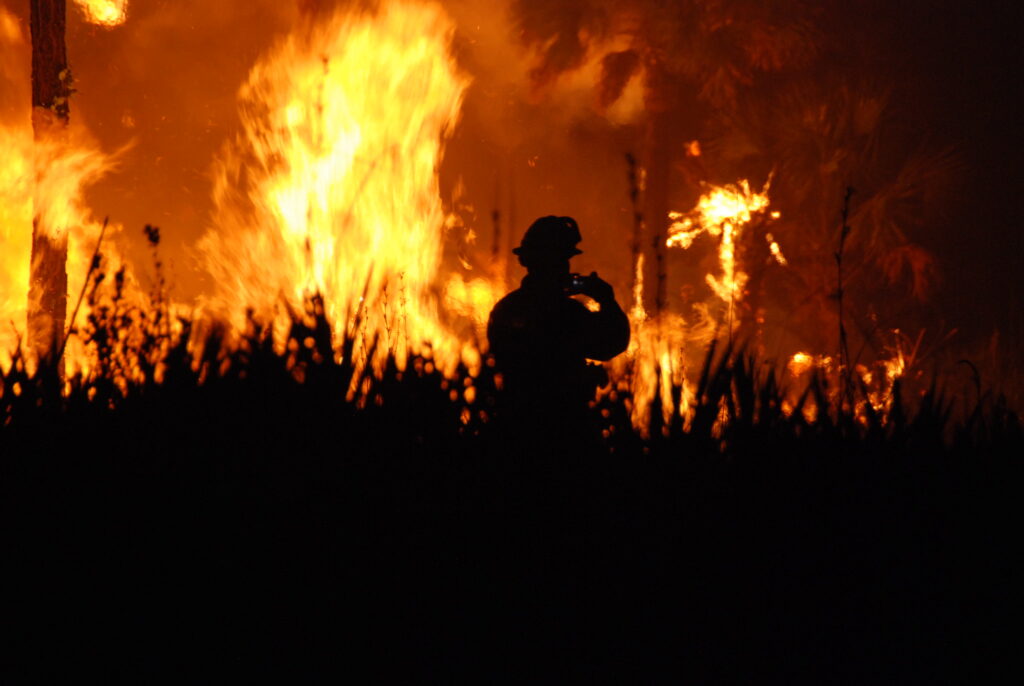Imagine if a factory periodically spewed massive amounts of pollution when its pollution control device failed, fouling the air and water for dozens, hundreds, or thousands of miles. If the failure resulted from the company failing to properly clean a filter when dirty filters are known to fail during periods of extreme heat, would the hot day excuse the company’s failure? Would you not expect the company to take extra precautions to make sure this couldn’t happen again?
Unfortunately, if you substitute a wildfire for the factory, the answers to those questions seem to change. This summer, the nation has watched in apprehension as a record-setting area of western states has burned, with devastating consequences to communities, wildlife, air, and water quality.
Like the imagined factory, large wildfires have a complex mix of causes but two loom large. First, governments have mismanaged fire risks over decades. Fire played an important role, historically, in maintaining western ecosystems. But for much of the 20th Century, the U.S. Forest Service and other government agencies tried to prevent or extinguish every wildfire, causing a significant buildup of brush and other fire-prone vegetation.
Second, California and other western states are experiencing longer, hotter, drier summers, which many scientists attribute to climate change. These climactic conditions exacerbate fire risks, by increasing the likelihood of ignition, the heat of fires, and the rate of their spread.
While the most significant and important response to these fires has been the brave efforts of countless firefighters, inmates, and others to contain the fires and protect human life, the political response has been far from inspiring. Like the imaginary factory owner blaming the heat for his dirty filter failing, many politicians are arguing over whether mismanagement or climate change are more to blame, according to which best fits their policy goals.
Of course, addressing either cause would mitigate the harm done by the other. If land was better managed for fire, that consequence of climate change would be reduced. And, if climate change were mitigated, the consequences of historical mismanagement would be lessened. But there’s a huge difference in the practicality of these options. Reducing fuel loads can mitigate fire risk immediately; climate change regulation today would, at best, affect the climate decades from now (which is not an argument for ignoring climate risks, to be sure, only against holding more immediate solutions to wildfire risks hostage to long-term climate action).
How would the government improve wildfire risk management? Fortunately, the Forest Service and other agencies long ago recognized the folly of trying to prevent and extinguish every fire. But the effects of this policy linger in forests with excessive fuel loads.
One solution would be to modify regulations to produce better incentives. Right now, regulations discourage affirmative action to address fire risks, while the environmental consequences of inaction may be ignored. For instance, it is difficult to perform controlled burns in California because the Clean Air Act and state equivalents treat the smoke from these burns as air pollution requiring a permit, effectively limiting such burns to a short period every year when conditions are ideal. Paradoxically, it doesn’t matter that these burns are intended to reduce air pollution from large fires are blocked by regulation intended to protect air quality. And, for obvious reasons, no permit is required for a large wildfire.
Resource constraints are also a legitimate challenge. The U.S. Forest Service alone faces a 20-year backlog, based on recent funding levels, to reduce fuel loads in areas already known to be overgrown. Since it’s unlikely that fuel loads will stop growing for a few decades to allow the agency to catch-up, there’s a need for other funding. Fortunately, there are many opportunities to bring other stakeholders into the process of paying for the maintenance of forests they value. Insurance companies can encourage landowners to internalize fire risks and incentivize private efforts to reduce those risks. And Forest Resiliency Bonds can enable government agencies, local governments, private companies, and landowners to partner on funding projects that reduce particular fire risks.
Ultimately, there’s no one silver bullet for solving wildfire risks. It’s likely to take many innovations to increase government accountability for inaction in the face of these risks, reduce regulatory obstacles to active management, and to bring private ingenuity and resources to bear on the problem. As this summer’s record-setting fires show, the costs of further delay are extreme.




